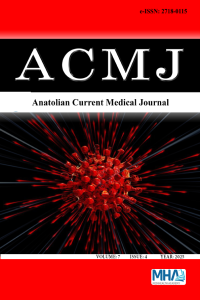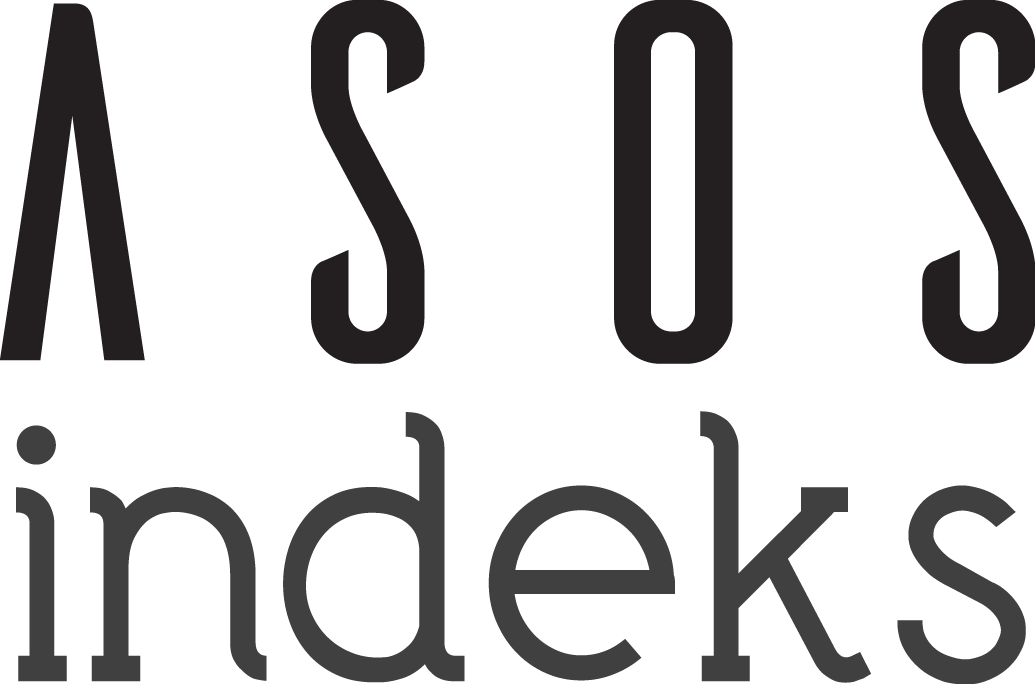Abstract
Aims: Acute liver failure is a clinical condition characterized by sudden onset, high morbidity, and mortality in the absence of any known liver disease. The present study aimed to investigate the status of self-care, anhedonia, and anxiety-like behaviors in a paracetamol-induced acute liver injury (ALI) model.
Methods: Twelve adult male Wistar Albino rats were divided into two groups: a control group (n=6) and an acute liver damage group (n=6). The control group received 1 ml/kg physiological saline intraperitoneally (i.p.), while the ALI group received a single dose of 750 mg/kg paracetamol (i.p.). Behavioral tests, including the open field test (OFT), splash test, and sucrose preference test, were performed. Serum alanine aminotransferase (ALT) and aspartate aminotransferase (AST) enzyme levels were measured.
Results: AST and ALT levels were higher in the acute liver damage group than in the control group (p<0.05). In the ALI group, the frequency and duration of grooming decreased, and the grooming latency time increased (p<0.001). In the OFT, locomotor activity parameters decreased while anxiety-like behaviors increased (p<0.05). Sucrose solution consumption decreased to below 65% in the ALI group and was significantly reduced compared to the control group (p<0.001).
Conclusion: In the ALI model, self-care behavior patterns were negatively affected in duration and frequency. Similarly, locomotor activity and exploratory behavior were decreased, and anxiety-like behaviors increased in the open-field test. Anhedonia was also observed in the sucrose preference test. Further studies on ALI are needed to investigate the negative behavioral changes observed.
Keywords
Acute live injury anhedonia anxiety-like behaviors self-care behavior splash test paracetamol
Ethical Statement
The Animal Experiments Local Ethics Committee of Balıkesir University approved this study (Decision No: 2023/11-2).
Thanks
I want to thank Dr. Vet. Dr. Mustafa Hilmi Yaranoğlu and Health Technician Mehmet Bozdemir for their help in providing animals.
References
- Bernal W, Auzinger G, Dhawan A, Wendon J. Acute liver failure. Lancet. 2010;376(9736):190-201. doi:10.1016/S0140-6736(10)60274-7
- Nilsen O, Fisher C, Warrillow S. Update on the management of acute liver failure. Curr Opin Crit Care. 2025;31(2):219-227. doi:10.1097/MCC. 0000000000001253
- Lemmer P, Sowa JP, Bulut Y, Strnad P, Canbay A. Mechanisms and aetiology-dependent treatment of acute liver failure. Liver Int. 2025; 45(3):e15739. doi:10.1111/liv.15739
- Graham GG, Davies MJ, Day RO, Mohamudally A, Scott KF. The modern pharmacology of paracetamol: therapeutic actions, mechanism of action, metabolism, toxicity, and recent pharmacological findings. Inflammopharmacology. 2013;21(3):201-232. doi:10.1007/s10787-013-0172-x
- Larson AM, Polson J, Fontana RJ, et al. Acetaminophen-induced acute liver failure: results of a United States multicenter, prospective study. Hepatology. 2005;42(6):1364-1372. doi:10.1002/hep.20948
- Fontana RJ. Acute liver failure including acetaminophen overdose. Med Clin North Am. 2008;92(4):761-794. doi:10.1016/j.mcna.2008.03.005
- Huang X, Liu X, Yu Y. Depression and chronic liver diseases: are there shared underlying mechanisms? Front Mol Neurosci. 2017;10:134. doi: 10.3389/fnmol.2017.00134
- Dogar IA, Siddiqui N, Bajwa A, Bhatti A, Haider N, Hashmi ZY. Relationship between liver diseases and levels of anxiety and depression. J Pak Psychiatr Soc. 2009;6(2):61-64.
- Abdelghffar EAR, El-Nashar HAS, Fayez S, Obaid WA, Eldahshan OA. Ameliorative effect of oregano (Origanum vulgare) versus silymarin in experimentally induced hepatic encephalopathy. Sci Rep. 2022;12(1): 17854. doi:10.1038/s41598-022-20412-3
- Kawai H, Ishibashi T, Kudo N, Kawashima Y, Mitsumoto A. Behavioral and biochemical characterization of rats treated chronically with thioacetamide: proposal of an animal model for hepatic encephalopathy associated with cirrhosis. J Toxicol Sci. 2012;37(6):1165-1175. doi:10.2131/jts.37.1165
- N.R. Council Guide for the care and use of laboratory animals. National Academies Press. 2010.
- Ishida Y, Kondo T, Ohshima T, Fujiwara H, Iwakura Y, Mukaida N. A pivotal involvement of IFN-'in the pathogenesis of acetaminophen-induced acute liver injury. FASEB J. 2002;16(10):1227-1236. doi:10.1096/fj.02-0046com
- Mroueh M, Saab Y, Rizkallah R. Hepatoprotective activity of Centaurium erythraea on acetaminophen-induced hepatotoxicity in rats. Phytother Res. 2004;18(5):431-433. doi:10.1002/ptr.1498
- Çalışkan H, Akat F, Dursun AD, Zaloğlu N. Chronic pregabalin treatment reduced anxiety, and acute pregabalin treatment increased depression-like behaviors in rats. BMC Pharmacol Toxicol. 2024;25(1):72. doi:10.1186/s40360-024-00794-y
- Çalışkan H, Karakaya D, Koçak S, Ömercioğlu G, Baştuğ M. Effect of high-intensity interval training on self-care and anxiety-like behaviors in naive rats. Exp Brain Res. 2024;242(4):913-920. doi:10.1007/s00221-024-06793-z
- Verharen JP, de Jong JW, Zhu Y, Lammel S. A computational analysis of mouse behavior in the sucrose preference test. Nat Commun. 2023;14(1): 2419. doi:10.1038/s41467-023-38028-0
- Burn CC, Peters A, Day MJ, Mason GJ. Long-term effects of cage-cleaning frequency and bedding type on laboratory rat health, welfare, and handleability: a cross-laboratory study. Lab Anim. 2006;40(4):353-370. doi:10.1258/002367706778476460
- Doğan İ, Doğan N. Estimation of sample size with resource equation method in experimental animal studies. Türkiye Klinikleri J Biostat. 2020;2(2):211-217.
- Aycan IÖ, Tüfek A, Tokgöz O, et al. Thymoquinone treatment against acetaminophen-induced hepatotoxicity in rats. Int J Surg. 2014;12(3):213-218. doi:10.1016/j.ijsu.2013.12.013
- Simon P, Dupuis R, Costentin J. Thigmotaxis as an index of anxiety in mice. Influence of dopaminergic transmissions. Behav Brain Res. 1994; 61(1):59-64. doi:10.1016/0166-4328(94)90008-6
- Yang X, Liu W, Dang P, et al. Decreased brain noradrenaline in minimal hepatic encephalopathy is associated with cognitive impairment in rats. Brain Res. 2022;1793:148041. doi:10.1016/j.brainres.2022.148041
- Zhou Z, Li K, Guo J, et al. Green tea catechin EGCG ameliorates thioacetamide-induced hepatic encephalopathy in rats via modulation of the microbiota-gut-liver axis. Mol Nutr Food Res. 2023;67(8):e2200821. doi:10.1002/mnfr.202200821
- Caliskan H, Akat F, Tatar Y, et al. Effects of exercise training on anxiety in diabetic rats. Behav Brain Res. 2019;376:112084. doi:10.1016/j.bbr. 2019.112084
- Faleiros BE, Miranda AS, Campos AC, et al. Up-regulation of brain cytokines and chemokines mediates neurotoxicity in early acute liver failure by a mechanism independent of microglial activation. Brain Res. 2014;1578:49-59. doi:10.1016/j.brainres.2014.07.001
- Çalışkan H, Önal D, Nalçacı E. Darbepoetin alpha has an anxiolytic and anti-neuroinflammatory effect in male rats. BMC Immunol. 2024;25(1): 75. doi:10.1186/s12865-024-00665-5
- Gallego-Durán R, Hadjihambi A, Ampuero J, Rose CF, Jalan R, Romero-Gómez M. Ammonia-induced stress response in liver disease progression and hepatic encephalopathy. Nat Rev Gastroenterol Hepatol. 2024;21(11):774-791. doi:10.1038/s41575-024-00970-9
- Ott P, Larsen FS. Blood–brain barrier permeability to ammonia in liver failure: a critical reappraisal. Neurochem Int. 2004;44(4):185-198. doi:10. 1016/s0197-0186(03)00153-0
- Suh JI, Sakong JK, Lee K, et al. Anxiety and depression propensities in patients with acute toxic liver injury. World J Gastroenterol. 2013;19(47): 9069-9076. doi:10.3748/wjg.v19.i47.9069
- Galland F, Negri E, Da Ré C, et al. Hyperammonemia compromises glutamate metabolism and reduces BDNF in the rat hippocampus. Neurotoxicology. 2017;62:46-55. doi:10.1016/j.neuro.2017.05.006
- Rama Rao KV, Jayakumar AR, Norenberg MD. Brain edema in acute liver failure: mechanisms and concepts. Metab Brain Dis. 2014;29(4):927-936. doi:10.1007/s11011-014-9502-y
Abstract
Aims: Acute liver failure is a clinical condition characterized by sudden onset, high morbidity, and mortality in the absence of any known liver disease. The present study aimed to investigate the status of self-care, anhedonia, and anxiety-like behaviors in a paracetamol-induced acute liver injury (ALI) model.
Methods: Twelve adult male Wistar Albino rats were divided into two groups: a control group (n=6) and an acute liver damage group (n=6). The control group received 1 ml/kg physiological saline intraperitoneally (i.p.), while the ALI group received a single dose of 750 mg/kg paracetamol (i.p.). Behavioral tests, including the open field test (OFT), splash test, and sucrose preference test, were performed. Serum alanine aminotransferase (ALT) and aspartate aminotransferase (AST) enzyme levels were measured.
Results: AST and ALT levels were higher in the acute liver damage group than in the control group (p<0.05). In the ALI group, the frequency and duration of grooming decreased, and the grooming latency time increased (p<0.001). In the OFT, locomotor activity parameters decreased while anxiety-like behaviors increased (p<0.05). Sucrose solution consumption decreased to below 65% in the ALI group and was significantly reduced compared to the control group (p<0.001).
Conclusion: In the ALI model, self-care behavior patterns were negatively affected in duration and frequency. Similarly, locomotor activity and exploratory behavior were decreased, and anxiety-like behaviors increased in the open-field test. Anhedonia was also observed in the sucrose preference test. Further studies on ALI are needed to investigate the negative behavioral changes observed.
Keywords
Acute live injury anhedonia anxiety-like behaviors self-care behavior splash test paracetamol
References
- Bernal W, Auzinger G, Dhawan A, Wendon J. Acute liver failure. Lancet. 2010;376(9736):190-201. doi:10.1016/S0140-6736(10)60274-7
- Nilsen O, Fisher C, Warrillow S. Update on the management of acute liver failure. Curr Opin Crit Care. 2025;31(2):219-227. doi:10.1097/MCC. 0000000000001253
- Lemmer P, Sowa JP, Bulut Y, Strnad P, Canbay A. Mechanisms and aetiology-dependent treatment of acute liver failure. Liver Int. 2025; 45(3):e15739. doi:10.1111/liv.15739
- Graham GG, Davies MJ, Day RO, Mohamudally A, Scott KF. The modern pharmacology of paracetamol: therapeutic actions, mechanism of action, metabolism, toxicity, and recent pharmacological findings. Inflammopharmacology. 2013;21(3):201-232. doi:10.1007/s10787-013-0172-x
- Larson AM, Polson J, Fontana RJ, et al. Acetaminophen-induced acute liver failure: results of a United States multicenter, prospective study. Hepatology. 2005;42(6):1364-1372. doi:10.1002/hep.20948
- Fontana RJ. Acute liver failure including acetaminophen overdose. Med Clin North Am. 2008;92(4):761-794. doi:10.1016/j.mcna.2008.03.005
- Huang X, Liu X, Yu Y. Depression and chronic liver diseases: are there shared underlying mechanisms? Front Mol Neurosci. 2017;10:134. doi: 10.3389/fnmol.2017.00134
- Dogar IA, Siddiqui N, Bajwa A, Bhatti A, Haider N, Hashmi ZY. Relationship between liver diseases and levels of anxiety and depression. J Pak Psychiatr Soc. 2009;6(2):61-64.
- Abdelghffar EAR, El-Nashar HAS, Fayez S, Obaid WA, Eldahshan OA. Ameliorative effect of oregano (Origanum vulgare) versus silymarin in experimentally induced hepatic encephalopathy. Sci Rep. 2022;12(1): 17854. doi:10.1038/s41598-022-20412-3
- Kawai H, Ishibashi T, Kudo N, Kawashima Y, Mitsumoto A. Behavioral and biochemical characterization of rats treated chronically with thioacetamide: proposal of an animal model for hepatic encephalopathy associated with cirrhosis. J Toxicol Sci. 2012;37(6):1165-1175. doi:10.2131/jts.37.1165
- N.R. Council Guide for the care and use of laboratory animals. National Academies Press. 2010.
- Ishida Y, Kondo T, Ohshima T, Fujiwara H, Iwakura Y, Mukaida N. A pivotal involvement of IFN-'in the pathogenesis of acetaminophen-induced acute liver injury. FASEB J. 2002;16(10):1227-1236. doi:10.1096/fj.02-0046com
- Mroueh M, Saab Y, Rizkallah R. Hepatoprotective activity of Centaurium erythraea on acetaminophen-induced hepatotoxicity in rats. Phytother Res. 2004;18(5):431-433. doi:10.1002/ptr.1498
- Çalışkan H, Akat F, Dursun AD, Zaloğlu N. Chronic pregabalin treatment reduced anxiety, and acute pregabalin treatment increased depression-like behaviors in rats. BMC Pharmacol Toxicol. 2024;25(1):72. doi:10.1186/s40360-024-00794-y
- Çalışkan H, Karakaya D, Koçak S, Ömercioğlu G, Baştuğ M. Effect of high-intensity interval training on self-care and anxiety-like behaviors in naive rats. Exp Brain Res. 2024;242(4):913-920. doi:10.1007/s00221-024-06793-z
- Verharen JP, de Jong JW, Zhu Y, Lammel S. A computational analysis of mouse behavior in the sucrose preference test. Nat Commun. 2023;14(1): 2419. doi:10.1038/s41467-023-38028-0
- Burn CC, Peters A, Day MJ, Mason GJ. Long-term effects of cage-cleaning frequency and bedding type on laboratory rat health, welfare, and handleability: a cross-laboratory study. Lab Anim. 2006;40(4):353-370. doi:10.1258/002367706778476460
- Doğan İ, Doğan N. Estimation of sample size with resource equation method in experimental animal studies. Türkiye Klinikleri J Biostat. 2020;2(2):211-217.
- Aycan IÖ, Tüfek A, Tokgöz O, et al. Thymoquinone treatment against acetaminophen-induced hepatotoxicity in rats. Int J Surg. 2014;12(3):213-218. doi:10.1016/j.ijsu.2013.12.013
- Simon P, Dupuis R, Costentin J. Thigmotaxis as an index of anxiety in mice. Influence of dopaminergic transmissions. Behav Brain Res. 1994; 61(1):59-64. doi:10.1016/0166-4328(94)90008-6
- Yang X, Liu W, Dang P, et al. Decreased brain noradrenaline in minimal hepatic encephalopathy is associated with cognitive impairment in rats. Brain Res. 2022;1793:148041. doi:10.1016/j.brainres.2022.148041
- Zhou Z, Li K, Guo J, et al. Green tea catechin EGCG ameliorates thioacetamide-induced hepatic encephalopathy in rats via modulation of the microbiota-gut-liver axis. Mol Nutr Food Res. 2023;67(8):e2200821. doi:10.1002/mnfr.202200821
- Caliskan H, Akat F, Tatar Y, et al. Effects of exercise training on anxiety in diabetic rats. Behav Brain Res. 2019;376:112084. doi:10.1016/j.bbr. 2019.112084
- Faleiros BE, Miranda AS, Campos AC, et al. Up-regulation of brain cytokines and chemokines mediates neurotoxicity in early acute liver failure by a mechanism independent of microglial activation. Brain Res. 2014;1578:49-59. doi:10.1016/j.brainres.2014.07.001
- Çalışkan H, Önal D, Nalçacı E. Darbepoetin alpha has an anxiolytic and anti-neuroinflammatory effect in male rats. BMC Immunol. 2024;25(1): 75. doi:10.1186/s12865-024-00665-5
- Gallego-Durán R, Hadjihambi A, Ampuero J, Rose CF, Jalan R, Romero-Gómez M. Ammonia-induced stress response in liver disease progression and hepatic encephalopathy. Nat Rev Gastroenterol Hepatol. 2024;21(11):774-791. doi:10.1038/s41575-024-00970-9
- Ott P, Larsen FS. Blood–brain barrier permeability to ammonia in liver failure: a critical reappraisal. Neurochem Int. 2004;44(4):185-198. doi:10. 1016/s0197-0186(03)00153-0
- Suh JI, Sakong JK, Lee K, et al. Anxiety and depression propensities in patients with acute toxic liver injury. World J Gastroenterol. 2013;19(47): 9069-9076. doi:10.3748/wjg.v19.i47.9069
- Galland F, Negri E, Da Ré C, et al. Hyperammonemia compromises glutamate metabolism and reduces BDNF in the rat hippocampus. Neurotoxicology. 2017;62:46-55. doi:10.1016/j.neuro.2017.05.006
- Rama Rao KV, Jayakumar AR, Norenberg MD. Brain edema in acute liver failure: mechanisms and concepts. Metab Brain Dis. 2014;29(4):927-936. doi:10.1007/s11011-014-9502-y
Details
| Primary Language | English |
|---|---|
| Subjects | Physiopathology |
| Journal Section | Research Articles |
| Authors | |
| Publication Date | July 28, 2025 |
| Submission Date | May 5, 2025 |
| Acceptance Date | June 6, 2025 |
| Published in Issue | Year 2025 Volume: 7 Issue: 4 |
TR DİZİN ULAKBİM and International Indexes (1b)
Interuniversity Board (UAK) Equivalency: Article published in Ulakbim TR Index journal [10 POINTS], and Article published in other (excuding 1a, b, c) international indexed journal (1d) [5 POINTS]
Note: Our journal is not WOS indexed and therefore is not classified as Q.
You can download Council of Higher Education (CoHG) [Yüksek Öğretim Kurumu (YÖK)] Criteria) decisions about predatory/questionable journals and the author's clarification text and journal charge policy from your browser. https://dergipark.org.tr/tr/journal/3449/file/4924/show
Journal Indexes and Platforms:
TR Dizin ULAKBİM, Google Scholar, Crossref, Worldcat (OCLC), DRJI, EuroPub, OpenAIRE, Turkiye Citation Index, Turk Medline, ROAD, ICI World of Journal's, Index Copernicus, ASOS Index, General Impact Factor, Scilit.The indexes of the journal's are;
The platforms of the journal's are;
|
The indexes/platforms of the journal are;
TR Dizin Ulakbim, Crossref (DOI), Google Scholar, EuroPub, Directory of Research Journal İndexing (DRJI), Worldcat (OCLC), OpenAIRE, ASOS Index, ROAD, Turkiye Citation Index, ICI World of Journal's, Index Copernicus, Turk Medline, General Impact Factor, Scilit
Journal articles are evaluated as "Double-Blind Peer Review"
All articles published in this journal are licensed under a Creative Commons Attribution 4.0 International License (CC BY 4.0)














